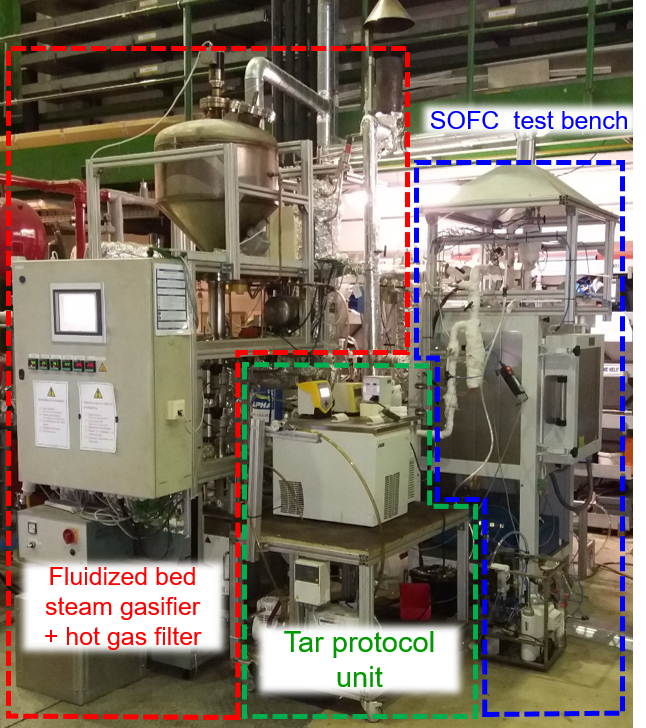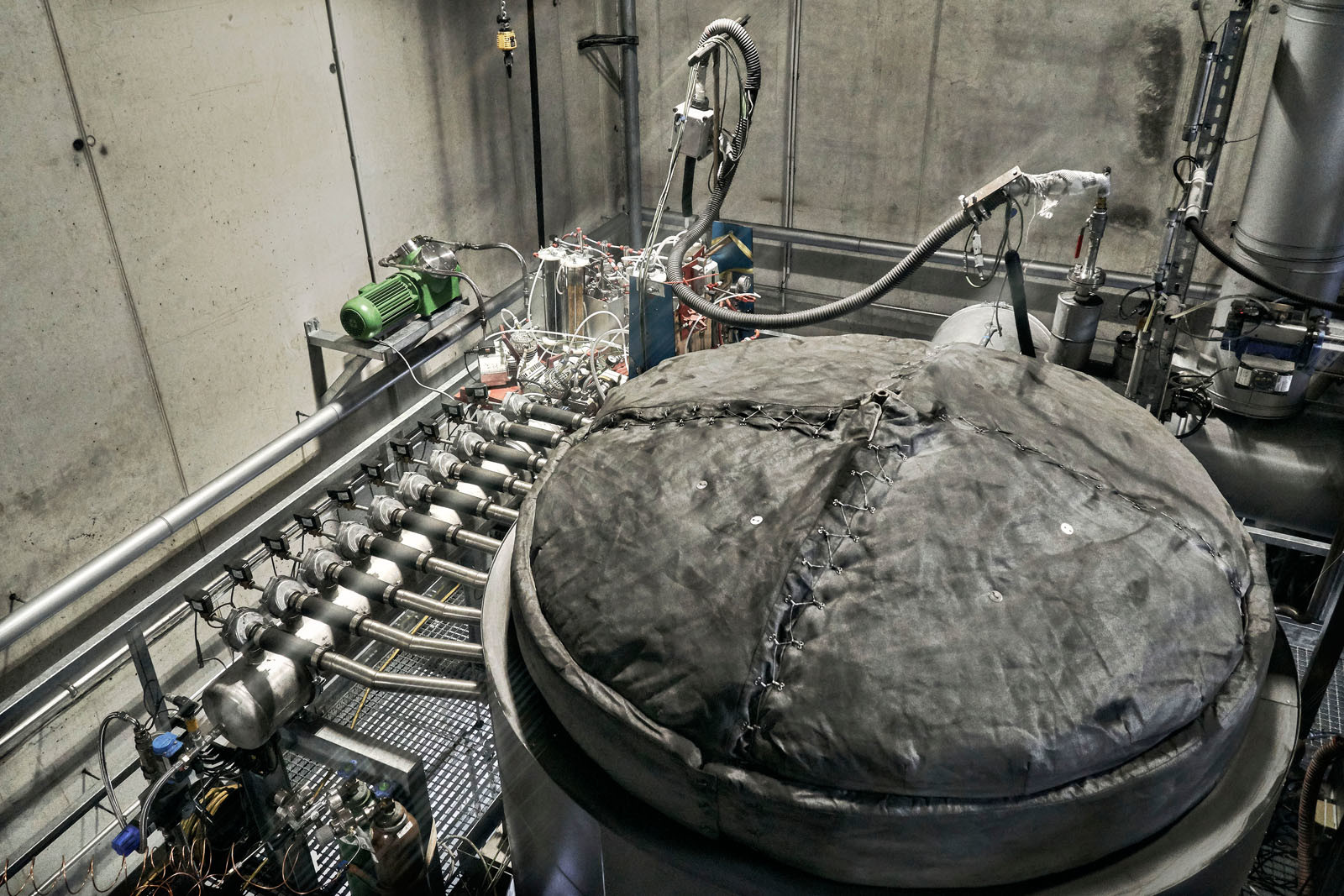News

A gasifier-SOFC coupling test bench was developed at Graz University of Technology in order to investigate the operation of SOFCs with product gas from steam gasification with a more industrial-relevant SCR (approx. 2) and varying tar contents (2.8-4.8 g·Nm-3 gravimetric tars), a novelty for the scientific community. An extensive experimental campaign was conducted in which changes in cell performance, anode- and contact mesh material morphology and fuel cell tar reforming capability were investigated for industrial-relevant cell types at 850°C and 800°C. Moreover, a focus was laid on the understanding of the quantity and type of solid carbon that was formed during the experiments as well as on the amount and composition of tars entering- and leaving the cell. Heavy tars were partially removed in some tests in a condensation unit which resulted in a gravimetric tar content of 2.8-3.7 g·Nm-3 in the product gas, whereby raw gas experiments were conducted with a gravimetric tar content ranging from 4.6 to 4.8 g·Nm-3.
Successful coupling without performance degradation could be demonstrated at 850°C for an electrolyte supported cell with Ni/ceria-based anode (higher tar tolerance) and an anode supported cell with Ni/zirconia-based anode for 30 h when heavy tars were partially reduced from the product gas. The reduction of heavy tars, although modest in the percentage of reduction of the total tar content, proved to be extremely relevant to avoid changes in the anode morphology and consequently to avoid performance degradation. At 850°C, an SCR of 2 might be sufficient to avoid carbon deposits on cell anodes and to ensure a graphitic structure of deposits on the cell support thus reducing the risk of fast blockages in the flow channels. Moreover, structural degradation of zirconia-based anodes might be avoided despite their known lower tolerance to tars in comparison to ceria-based anodes. At 800°C, successful operation of an anode supported cell with Ni/zirconia-based anode could also be demonstrated for 30 h. Although heavy tars were also reduced, a significantly larger quantity of carbon deposition could be observed besides a more pyrolytic structure of the deposited carbon. Thus, the addition of steam or a more intensive reduction of the tar content might be required measures to ensure stable long-term fuel cell operation at 800°C or below, as favorable for a facilitated heat recovery in biomass-to-power systems. Operating boundaries at these temperatures have to be determined in future works. Fuel cell operation with raw product is not recommended as heavy tars significantly increase the risk for nickel dusting in contact meshes and the cell anode.
More News
News


